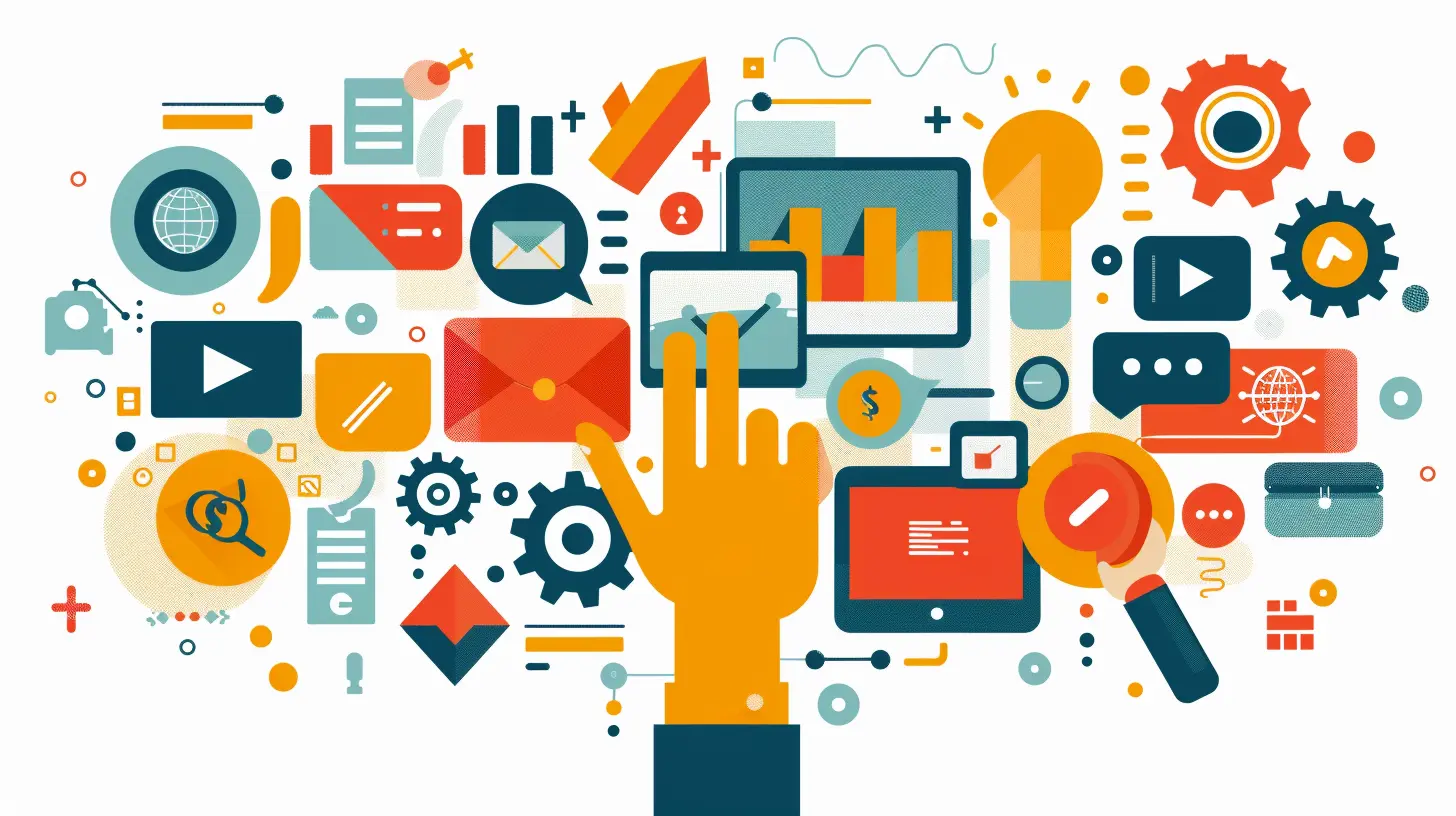How to Embrace Technology to Enhance Your Sales Process
10 July 2025
Let’s be honest—sales isn’t what it used to be. Gone are the days when success meant cold-calling and knocking on doors. Today, the sales game has evolved, and if you're not riding the tech wave, you’re probably sinking somewhere between lost leads and stalled deals. But don’t worry—you’re not alone, and the great news is that embracing technology doesn’t have to be scary or overwhelming.
In this guide, we’re going to talk about how you can use technology to not only simplify your sales process but also boost your conversions in a way that feels natural, efficient, and—dare we say it—enjoyable.

Why Embracing Technology Is No Longer Optional in Sales
Let’s start with the elephant in the room: Yes, technology moves fast. But here’s the thing—it’s not just a nice-to-have anymore; it’s mission-critical. The modern buyer is smarter, more informed, and quicker to make decisions (or to move on if you’re too slow). That means your sales process needs to be sharp, streamlined, and, most importantly, tech-supported.Think of technology as your sales sidekick—it’s like having a superpower that helps you work faster, stay organized, and understand your customers better.

Step 1: Understand Your Current Sales Process
Hold up—before you throw a bunch of shiny new tools into your sales cycle, take a moment to audit what you’ve already got going on. Do you have clear stages in your sales process? Are there any bottlenecks or drop-off points? Where are leads getting lost?Ask yourself:
- What steps are manual and repetitive?
- Where do we lose the most prospects?
- Are sales and marketing even on the same page?
By understanding your current workflow, you can figure out exactly where technology can slide in to help—and not just create more chaos.

Step 2: Automate the Time-Suckers
If there's one thing technology is great for, it’s automation. Think of all the little tasks that eat up hours of your day—sending follow-up emails, updating CRM entries, chasing down leads, or sorting through spreadsheets.Now imagine if those were done for you. That’s the magic of automation.
Tools That Can Help:
- CRM Systems like HubSpot or Salesforce keep your customer data tidy and track every interaction.- Email Automation with tools like Mailchimp or ActiveCampaign sends perfectly timed nurture emails without lifting a finger.
- Scheduling Tools such as Calendly eliminate the annoying back-and-forth of calendar coordination.
The result? You save time, reduce human error, and free your team up to do what they do best—sell.

Step 3: Use Data to Work Smarter, Not Harder
We’re not talking about being a data scientist here. But using data smartly can be a total game-changer. The beauty of modern sales tools is that they collect loads of useful information—you just need to know where to look.What kind of data matters?
- Lead behavior: What pages did your prospect visit? How long did they stay?- Email engagement: Who opened your email? Who clicked the link?
- Sales trends: Which reps are closing the most deals, and why?
Analytics tools (like Google Analytics or built-in CRM dashboards) can help you spot patterns and improve your sales strategy—kind of like having a GPS for your pipeline.
Step 4: Connect with Prospects Where They Are
Let’s face it, not everyone checks their email religiously. Some people prefer LinkedIn, others are active on Instagram, and some just want a quick phone call. Technology allows you to meet your audience where they’re already hanging out.Multi-channel selling is your new best friend.
Here’s how to do it:- Social Selling: Use LinkedIn to engage with prospects before sending that sales pitch. Share content, comment on their posts, and slide into their DMs (professionally, of course).
- Live Chat Tools: Platforms like Drift or Intercom let you chat with leads in real time while they’re browsing your site.
- SMS Marketing: Quick, personalized text messages can sometimes cut through the noise faster than email.
The key is to be helpful, not salesy—just like showing up at the right place at the right time with coffee.
Step 5: Personalize Everything (With Help From AI)
Here’s a reality check: your audience can smell a template from a mile away. Generic sales pitches are out, and hyper-personalized experiences are in.Thankfully, you don’t have to write a custom message for every single lead. AI tools can help you tailor your approach at scale—so you sound like a human, not a robot.
Game-changing personalization tools:
- ChatGPT (yep, like me!): Generate custom outreach messages based on lead data.- AI in CRMs: Tools like Salesforce Einstein or HubSpot AI give smart insights and personalization options.
- Dynamic Email Content: Tools that tailor email content based on user behavior or profile.
Personalization shows your prospects you’ve done your homework—and that earns instant brownie points.
Step 6: Train Your Sales Team with Tech
There’s no point in investing in fancy tools if your team doesn’t know how to use them. That’s like handing someone a Ferrari when they’ve only ever driven a bike.Make tech training part of your sales culture. Offer regular workshops, bite-sized video tutorials, and Q&A sessions. Some platforms even offer gamification to make learning fun—think leaderboards, badges, and rewards.
Remember: The more comfortable your team is with tech, the more confident and efficient they’ll be in the field.
Step 7: Optimize and Iterate
Tech isn’t a set-it-and-forget-it solution. Just like your phone needs an update here and there, so does your sales strategy.Set aside time every month or quarter to review your tools and processes:
- What’s working really well?
- What isn’t pulling its weight?
- Is there a new tool that could streamline this step?
Keep an open mind and be willing to experiment. Some tools might be a perfect fit; others might be a total flop. That’s okay! The goal is progress, not perfection.
Step 8: Create a Unified Tech Stack
You wouldn’t build a house with tools scattered all over the place—same goes for sales. Your tools should talk to each other and work in harmony.That’s what a tech stack is: your suite of sales tools, all connected to streamline your process.
Here’s what a basic sales tech stack might look like:
- CRM (like HubSpot or Salesforce)
- Email Marketing Tool (Mailchimp, ActiveCampaign)
- Lead Gen Tool (LinkedIn Sales Navigator, Clearbit)
- Video Selling Tool (Loom, Vidyard)
- Analytics Tool (Google Analytics, CRM dashboards)
Integration is key. Most modern tools offer native integrations or plug-ins to ensure data flows cleanly from one to the next. No more copying and pasting between platforms!
Step 9: Don’t Forget the Human Touch
All this talk about AI and automation—does it mean the personal touch is dead? Not a chance.In fact, the more tech you use, the more important it is to stay human. Technology should enhance the human connection, not replace it.
Use automation to handle the busywork so you can focus on building relationships. Use data to understand your lead’s pain points so you can show up with real solutions. And when in doubt—pick up the phone, shoot a voice message, or hop on a Zoom.
Empathy, authenticity, and genuine conversations will never go out of style.
Final Thoughts: Ride the Tech Wave, Don’t Fight It
Embracing technology doesn’t mean you have to become a robot or lose what makes you a great salesperson. It means leveraging tools that free you up to do more of what you’re best at: connecting with people, solving problems, and closing deals.The shift might feel a little weird at first—like switching from handwriting to typing—but once you get the hang of it, you’ll wonder how you ever lived without it.
So whether you’re starting small with some automation or going full throttle with a fancy CRM and AI-powered insights, remember this: Technology is your ally, not your enemy.
The future of sales is already here—and it’s smarter, faster, and full of potential. Now’s your time to shine.
all images in this post were generated using AI tools
Category:
SalesAuthor:

Rosa Gilbert
Discussion
rate this article
1 comments
Daisy Sanders
Embracing technology is essential for streamlining the sales process and boosting efficiency in today's competitive market.
July 18, 2025 at 4:42 AM

Rosa Gilbert
Absolutely! Embracing technology can transform your sales process, making it more efficient and competitive.


